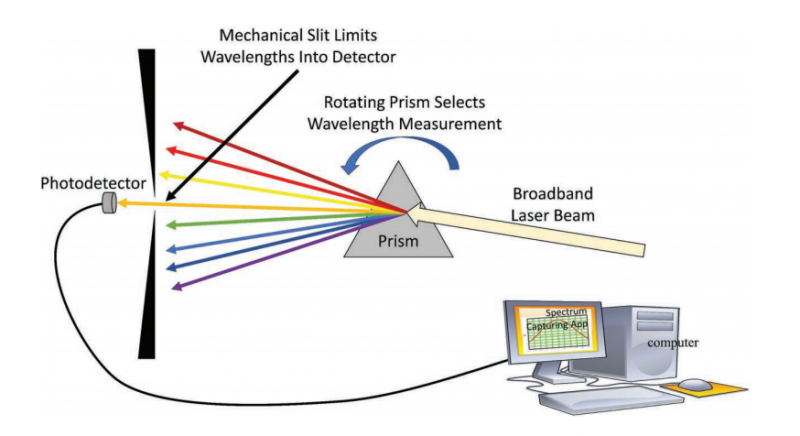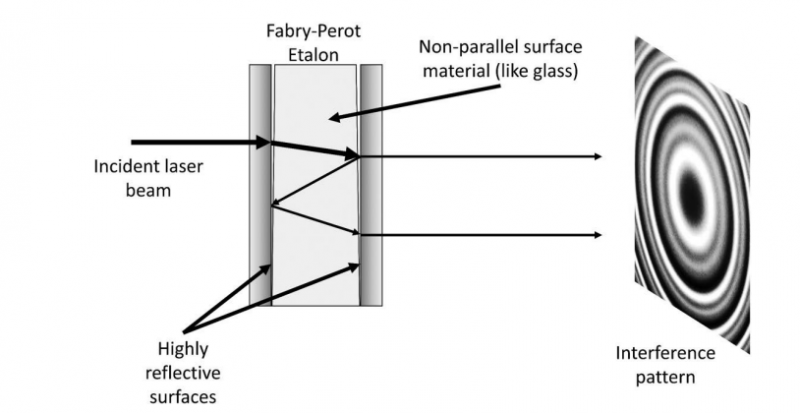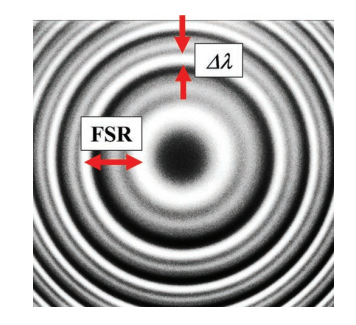How to measure the Linewidth of a Laser?
Calculating the linewidth of a laser is one thing, but how is it measured in the laboratory?
The linewidth can be measured in a couple of ways:
(1) a device called a monochromator can be used and
(2) a device called a Fabry–Perot etalon can be used.
A monochromator implements optically dispersive components such as prisms and gratings to spread a beam out into its multiwavelength components much in the same way a prism separates the colors of sunlight into the rainbow spectrum. Figure below shows how a monochromator works. In order to measure the linewidth of a laser beam the prism is rotated in one direction until no signal is detected and then measurements are made as the prism is rotated through the peak of the signal and then to the other side where it is zero. The monochromator must be calibrated with a known spectral source in order for the measurements to be in real (not relative) units.


Above Figure shows a Fabry–Perot etalon. Etalon is the French word for “measuring gauge” or “standard.” The device was developed by Charles Fabry and Alfred Perot in 1899. It consists of a wedge-shaped or non-parallel surface optically transmissive material (like glass) with highly reflective coatings or mirrors in intimate contact with each surface. The mirrors are designed to be parallel with each other. As light passes into one side of the etalon some of it is reflected back and forth with each pass. The exiting light, therefore, is slightly phase delayed with each other’s pass and the different phase-delayed light beams interfere with each other generating a pattern of concentric rings as shown in below Figure.

The distance between two adjacent rings is known as the free spectral range (FSR) of the etalon. The width of each ring is the linewidth of the light entering the etalon. The linewidth of the input light is calculated as
where F is the finesse of the etalon and is approximated as
and R is the reflectance of each mirror (assuming they are equal). Note that Equation below will often be rewritten as frequency units
and R is the reflectance of each mirror (assuming they are equal). Note that Equation below will often be rewritten as frequency unitsThe FSR will be given in either units of length or frequency (such as nm or MHz).
In order to use the etalon to make measurements of linewidth we must know information about the specific device being used in order to calibrate it. Typically, the manufacturer or vendor will sell an etalon with a specified calibrated FSR and finesse. The laser scientist or engineer then must use those numbers in comparison with measured numbers to make actual physically calibrated linewidth measurements.



